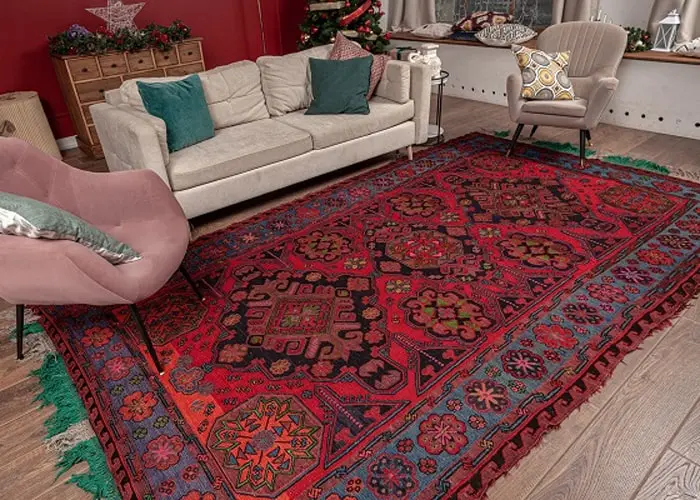You may come across a wide range of production methods when shopping for a new modern rug for your house. When it comes to shopping for a new modern rug for your house, you’ll see the terms “hand-knotted” and “hand-tufted” thrown around quite frequently.
Hand-knotted and hand-tufted rugs may appear identical at first glance, but there are a lot of differences between the two.
In this blog, we will take a step back and answer essential questions like What is a hand-tufted rug?
Then we’ll go into the types of handmade rugs and walk you through the important difference. Let’s dive in!
What are Hand-tufted rugs?
Hand-tufted rugs are becoming an increasingly popular handicraft in homes and businesses around the country.
Hand tufting is a more recent method that was designed to blend the age-old trade of weaving with the technologies of the new day. The process of hand tufting begins with the weaver starting with a sheet of canvas or similar material, and then the weaver uses a tufting gun or other equipment to draw wool strands through the cloth.

How are Hand-tufted Rugs Made?
A hand-tufted rug is made by a textile worker or crafter who uses a tufting tool to punch holes in strands of wool or thread. Hand tufting takes less time than hand knotting, and it doesn’t require a lot of special skills to get started.
The practice begins with the creation of a patterned background by a weaver. A textile worker or weaver uses the tufting cannon to insert yarn or cotton.
In order to keep the fibers intact, latex glue is applied to the rug after all the yarn or other material has been inserted.
After that, the rug loops are sheared by the weaver, resulting in a flat rug ready for foot usage. A rug’s edges are likely to make it more durable.
Hand-Knotted vs. Hand-Tufted Rugs: What are the differences?
Despite their similarity in name, there are significant differences between hand-tufted and hand-knotted rugs, which are both made entirely by hand.
A hand-knotted rug might take a long time to complete depending on the design. The higher the knot density, the higher the quality and the higher the price.
· Value and Longevity
Hand-tufted rugs are less expensive to create than hand-knotted rugs. With this in mind, hand-tufted rugs aren’t any less beautiful than their machine-made counterparts, and they’ve been used in some of the most wealthy homes in the world.
It is right that they do degrade sooner, but with good care, they may last anywhere from 10 to 20 years.
On the other hand, hand-tufted rugs are a good investment if you’re on a limited budget or have a lot of everyday concerns like children or pets that make a more expensive rug out of the question.
· Decorating hand tufted rug tips
Hand-tufted rugs look marvelous as an accessory on wood floors. A high-traffic location should be considered while purchasing a rug.
If there is a large crowd in your home, your rug’s lifespan will be reduced. Hand-tufted rugs may be used to cover couches, chairs, and even dining tables when decorating.
This type of rug ( Hand-tufted) may look fabulous in lofts and other industrial-looking areas. A tiny, “fluffy” tufted rug can also be added to a bathroom’s vanity or dressing area.
There is no obligation on where to place a tufted rug; nonetheless, you should remember that the rug will wear out faster and require replacement if exposed to more significant foot traffic, sunshine, and spills.
Caring hand tufted rug tips
To keep your hand-tufted rugs clean, vacuum them at least once a week. The best way to get rid of excessive rug fibers is to vacuum them every day or as often as necessary. Rotate the rug on a regular basis to maintain an even distribution of sunshine and foot traffic.
The second tip is that Hand-tufted rugs should not be shaken or beaten since this might harm the fibers. If the rug is soiled, immediately scrape the spot and vacuum the remaining residue.
The back of the rug would be the most apparent place to start. This part of the hand-tufted rug will be attached to a canvas backing. The reverse of a hand-knotted rug is a tapestry-style translation of the rug’s front.
By inspecting the reverse side, it is possible to count the number of knots per square inch in hand-knotted rugs.
Conclusion
Whether you choose a hand-tufted or hand-knotted rug for your home depends on your taste and need.
Several differences might help you identify which rug type best fits your needs.
We suggest assessing your priorities when selecting a modern rug. Design, thickness, cost, time, or durability are important factors before making a purchase.
